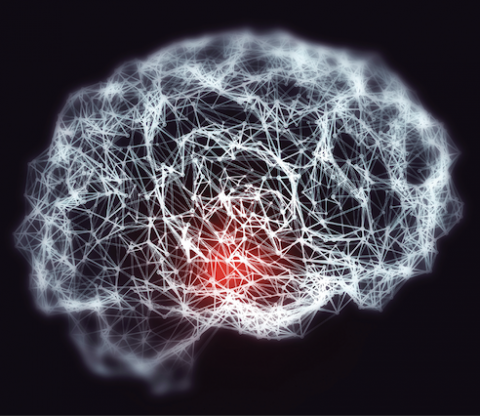Acting on Impulse: Parkinson’s disease treatments alter decision-making through two paths

Dopaminergic therapy and deep brain stimulation can improve the motor symptoms of Parkinson’s disease (PD). But both treatments can make patients more impulsive. In a new study, Carney researchers combined experimental testing with computational modeling to uncover two different routes the two treatments take to modify decision-making.
Parkinson's disease (PD) is typified by tremors, painful muscle contractions and difficulty speaking. Two existing treatments for Parkinson’s disease - deep brain stimulation (DBS) and dopaminergic therapy (DA) – can reduce tremors and normalize movement. However, these therapies can have adverse side effects that impact a PD sufferer’s ability to make rational decisions; side effects sometimes exhibited as impulsive behaviors like compulsive shopping, pathological gambling and hypersexuality.
In a new article in Current Biology, “Double dissociation of dopamine and subthalamic nucleus stimulation on effortful cost/benefit decision making," Guillaume J. Pagnier, a graduate student in Brown’s Neuroscience Graduate Program, Michael Frank, professor of psychology and brain science, and Wael Asaad, professor of neurosurgery and neuroscience recruited people with Parkinson’s disease to perform tasks that required weighing effort and reward. They combined experimental data with computational analysis to explain how impulsive behavior could emerge from separate physiological mechanisms. Pagnier and Frank spoke to the Carney Institute about their study.
Carney Institute: Where was the genesis for this study?

Michael Frank (MF): I started studying Parkinson's disease during my Ph.D. 20 years ago and was curious that there seemed to be an overlap between brain systems that are involved in basic motor function, higher level decision making and cognitive actions. So, we built theoretical models that unified this motivation/reward circuit and, in the process, realized that they could make very simple predictions about what would happen if you manipulate dopamine levels. Dopamine plays a key role in movement selection, motivating decision making and memory.
A powerful way to test these models is by working with patients with Parkinson's disease who have depleted levels of dopamine in their systems. While there are medications that can increase dopamine, dopamine agonists (DA), some people who take these therapeutics develop symptoms of impulsivity. This provided us with an experimental way of testing a basic science theoretical model and also allowed us to explain real-world clinical phenomena.
However, the early stages of the model didn’t consider one part of the network that is a target of a totally different kind of treatment for Parkinson's disease, which is deep brain stimulation (DBS), in a region called the subthalamic nucleus. DBS improves motor function for PD patients who stop responding to medication. But again, some of them start to have cognitive side effects that look like impulsivity.
What came out of the model was that both DA and DBS - two fundamentally different mechanisms - can affect impulsivity, but in different ways. By changing one of these, you have a way of assessing from a very precise behavioral measure what the underlying cause of impulsivity is and what treatment a patient may benefit from.
CI: Tell us a bit about the experimental design.
Guillaume Pagnier (GP): No one had ever really looked at this circuit within the same participants and orthogonally manipulated each one to see how it affected behavior. We came up with the design in collaboration with my co-advisor, neurosurgeon Dr. Wael Asaad.
The experiment focused on effortful decision-making. Each task in the experiment had a reward - in this case virtual currency - which was proportional to the amount of effort the subject put in. They had to weigh the amount of effort necessary to earn a certain number of points. For example, in order to earn a certain reward, a subject had to squeeze a hand-held dynamometer for a duration of time to fill up a bar on a screen. The higher the bar, the more effort they'd have put into the task (squeezing the dynamometer) - but harder tasks were always accompanied by a higher reward. We played around with the number of points and the amount of effort required to win points to estimate the subject's sensitivity to benefits and costs, which is analogous to their sensitivity to effort.

The effects of dopamine then become really clear if you can estimate an individual’s subjective benefits and subjective costs, and then control this difference as a variable of needed grip strength for points awarded. From there, you can observe how DA and DBS treatments are affecting these perceived benefits and costs.
“What’s especially powerful about this study is that it demonstrates how computational models can be used in a clinically relevant and basic science way.”
MF: One of the ways you can dissociate these things is not just by looking at the choices that people make and their sensitivity to cost /benefits, but how fast they come to those decisions. So, we have these computational models that generate choices based on cost and benefits, but they also make very specific predictions about how much evidence people need - in other words, how much more benefit than costs you need to perceive before you take action.
It’s also central to point out that a lot of people think that Parkinson's disease or lack of dopamine prevents patients from being able to do certain tasks. But it's not that having a lack of dopamine only prevents them from being able to do it - rather it changes how costly it feels to take action.
In an animal model, if you try to coax a rat or a mouse to climb over a barrier for four pellets of food or just go left with no barrier for two pellets of food, a healthy animal will choose to climb the barrier. The dopamine depleted animal would choose the path with no barrier and a smaller award. You might think that that means they don't have the motivation but if you change the cost/benefit ratio to two pellets versus zero, even the dopamine-depleted animal will still go over the barrier. That shows that it's not the ability to make the movement that is impaired, it's the amount of cost that it confers relative to the benefit that they get.
CI: Where does the study go from here?
GP: Right now, I'm looking at the deep brain stimulation of the globus pallidus, a different node in the basal ganglia. Clinicians often decide whether to give a PD patient subthalamic stimulation or pallidal stimulation, and there’s some evidence that pallidal deep brain stimulation should also affect that decision threshold. I'm deploying these same models from this study onto a similar effortful decision-making task for patients being treated with pallidal stimulation and seeing how the results differ.
MF: I want to underline that there are always struggles in the scientific process of how to best test a hypothesis. In this study, we had a different way of analyzing the data before Guillaume decided to take the model more seriously. He generated data from the theoretical model and found an analysis that parsed out what the data should look like if the model was correct. And then when he did that analysis on real data, it looked beautiful. It captured essentially the same patterns from the theoretical data, matching those from the empirical data. That's exactly what you want.
Learn more about this research at the Laboratory of Neural Computation and Cognition



